The Council has decided that certain beaches are OK for dogs, even if they have hooded plovers.
I'm not going to name beaches, but you have beaches that have penguins nesting in the vegetation behind. And they're a dog beach, and we've had dog attacks on those penguins.
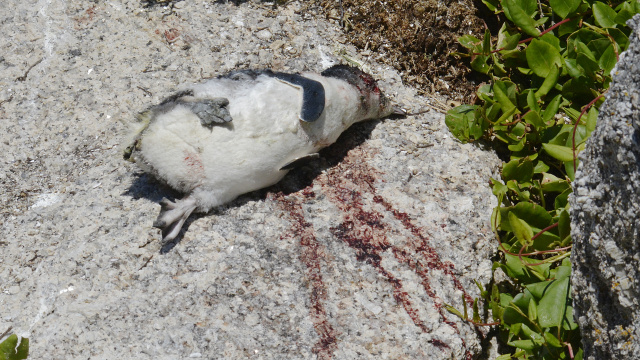
But as soon as you start talking about closing off a beach because of penguins or hooded plovers or whatever else, the dog owners arc up and they will not accept any restriction. They seem to take restrictions on their dogs very personally.
I've been threatened any number of times by dog owners who just tell me that they really don't care about the birds at all.
Their dog loves this little beach and as long as they have a dog they're going to keep bringing this dog to this beach, and they're going to let it run free and they don't care if it kills birds. It's a remarkable mindset that I can't rationalise.
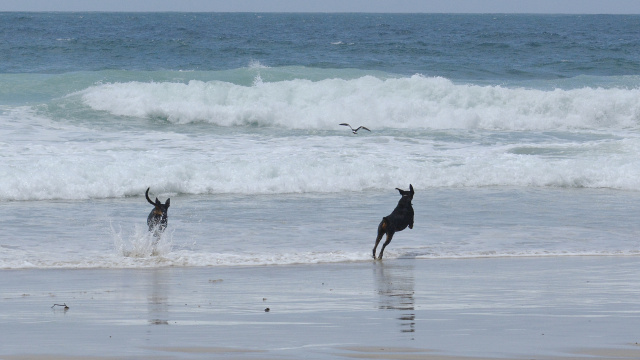
Without pointing the finger perhaps the worst group in the community are the surfers who have this cultural practice of bringing their dog to the beach, and letting the dog theoretically sit next to their gear while the owners are out there surfing and paddling away.
The trouble is Fido gets bored after about 30 seconds and starts roaming.
I've tried at various times to put articles into surfing magazines about dogs on beaches and the editors won't even talk to me. It's just a cultural practice for surfers to take their dogs to a beach.
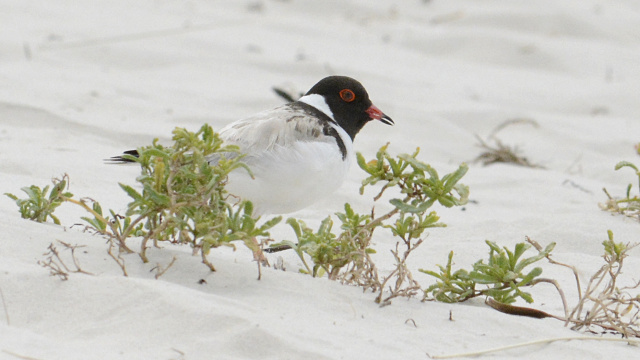
The presence of the dog will disturb the birds. The birds will see the dog as a predator, a potential threat so they'll walk off the nest if they're on eggs or small chicks. Or if they have larger chicks, they'll be down on the water's edge feeding because that's what they have to do to grow.
For the first four or so weeks of life, those chicks of the hooded plover, and for the first five or so weeks for the pied oystercatcher, can't fly.
Because these chicks can't fly, you can literally just walk up to them and pick them up. Or a dog can just go up and pick them up in its mouth and kill them in one bite.
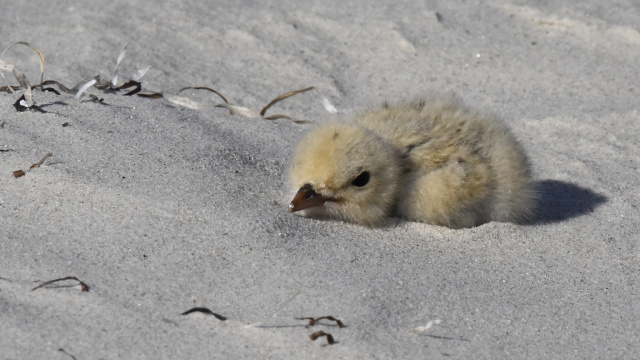
For example, a Council accepts this is a high conservation value area. There are four pairs of hooded plovers on this beach, or three pairs of hooded plovers, or there's a tern colony or something else happening on this beach - and the Council says okay, we're going to make it a no-dog beach and the signs go up.
Typically those signs last about 24 hours before the dog ends up on the beach. they take them down or paint them over or deface them in some way. There is a real pushback by dog owners and it's just it's been a running battle for as long as I've been doing this.
If you're absolutely determined to take your dog onto that beach no matter what, keep it on a lead, so that the dog stays with you and doesn't have a chance to run up into the dunes, or sniff out a nest or find the eggs or find the chicks.
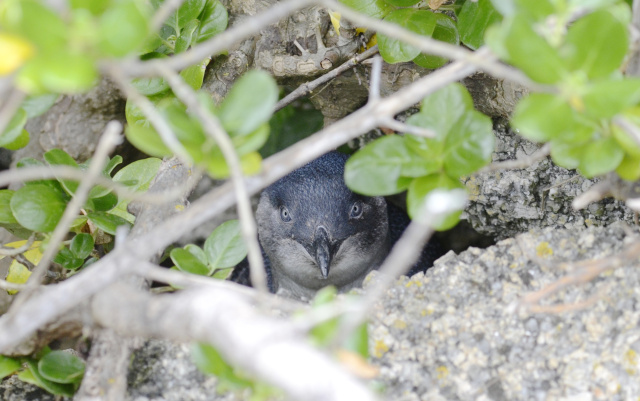
I have lots of photos of dogs eating eggs and taking chicks and chasing adults. So keep your dog on a lead, and that will minimise the damage to the shorebird population on that beach.
If it's a beach with these birds, you really should keep your dog away, and if there are no other options or people just feel that they have a God-given right to take their dog on to a particular beach, keep your dog on a lead, keep down to the wet sand, keep away from potential nesting sites. and minimise your time on the beach. These birds are nesting.
At the moment we're seeing nesting starting in late August, early September, through to February. So for five to six months of the year there's a very good chance there will be eggs or small chicks on that beach.
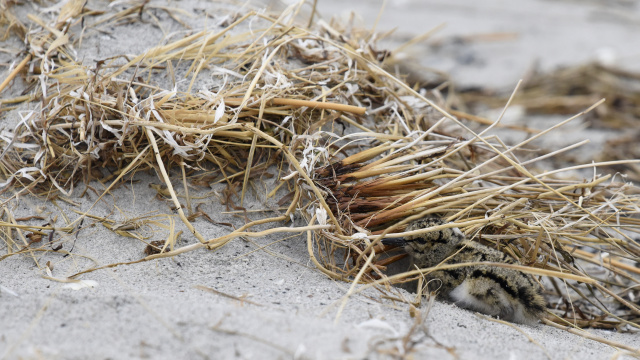
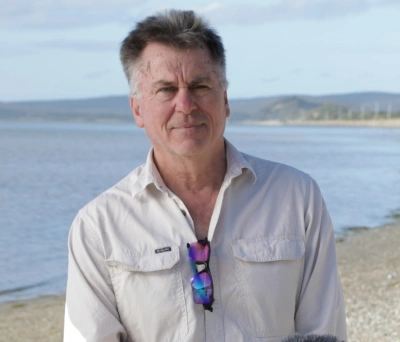
Dr Eric Woehler
The Council has decided that certain beaches are OK for dogs, even if they have hooded plovers.
I'm not going to name beaches, but you have beaches that have penguins nesting in the vegetation behind. And they're a dog beach, and we've had dog attacks on those penguins.

But as soon as you start talking about closing off a beach because of penguins or hooded plovers or whatever else, the dog owners arc up and they will not accept any restriction. They seem to take restrictions on their dogs very personally.
I've been threatened any number of times by dog owners who just tell me that they really don't care about the birds at all.
Their dog loves this little beach and as long as they have a dog they're going to keep bringing this dog to this beach, and they're going to let it run free and they don't care if it kills birds. It's a remarkable mindset that I can't rationalise.

Without pointing the finger perhaps the worst group in the community are the surfers who have this cultural practice of bringing their dog to the beach, and letting the dog theoretically sit next to their gear while the owners are out there surfing and paddling away.
The trouble is Fido gets bored after about 30 seconds and starts roaming.
I've tried at various times to put articles into surfing magazines about dogs on beaches and the editors won't even talk to me. It's just a cultural practice for surfers to take their dogs to a beach.

The presence of the dog will disturb the birds. The birds will see the dog as a predator, a potential threat so they'll walk off the nest if they're on eggs or small chicks. Or if they have larger chicks, they'll be down on the water's edge feeding because that's what they have to do to grow.
For the first four or so weeks of life, those chicks of the hooded plover, and for the first five or so weeks for the pied oystercatcher, can't fly.
Because these chicks can't fly, you can literally just walk up to them and pick them up. Or a dog can just go up and pick them up in its mouth and kill them in one bite.

For example, a Council accepts this is a high conservation value area. There are four pairs of hooded plovers on this beach, or three pairs of hooded plovers, or there's a tern colony or something else happening on this beach - and the Council says okay, we're going to make it a no-dog beach and the signs go up.
Typically those signs last about 24 hours before the dog ends up on the beach. they take them down or paint them over or deface them in some way. There is a real pushback by dog owners and it's just it's been a running battle for as long as I've been doing this.
If you're absolutely determined to take your dog onto that beach no matter what, keep it on a lead, so that the dog stays with you and doesn't have a chance to run up into the dunes, or sniff out a nest or find the eggs or find the chicks.

I have lots of photos of dogs eating eggs and taking chicks and chasing adults. So keep your dog on a lead, and that will minimise the damage to the shorebird population on that beach.
If it's a beach with these birds, you really should keep your dog away, and if there are no other options or people just feel that they have a God-given right to take their dog on to a particular beach, keep your dog on a lead, keep down to the wet sand, keep away from potential nesting sites. and minimise your time on the beach. These birds are nesting.
At the moment we're seeing nesting starting in late August, early September, through to February. So for five to six months of the year there's a very good chance there will be eggs or small chicks on that beach.

You might like...

Canine companion or beach predator?

Plight of the shorebirds

Watch: behind the scenes at the Bruny Island Bird Festival

Bruny Island launch: Dr Tonia Cochran on its global significance
Newsletter
Sign up to keep in touch with articles, updates, events or news from Kuno, your platform for nature
